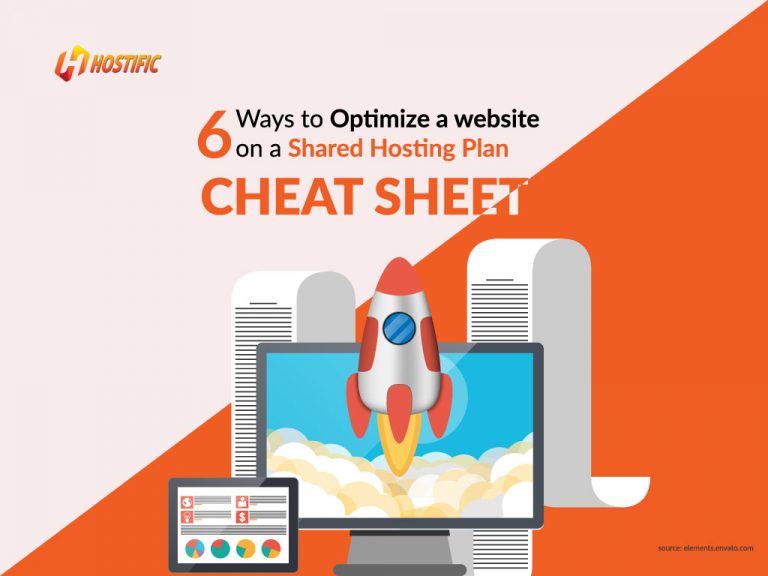Website optimization helps you understand your audience, attract traffic, generate leads and eventually sales. So, if you own or operate an account on a shared web hosting server, it’s important that you understand the power of optimization. First, let’s look at the definition of optimization before we dive into the best ways to optimize your website.
Table of Contents
What Is Optimization?
On the face of it, website optimization may seem like a complex concept, but it is anything but that. Put simply, website optimization is really about improving the experience users have when they visit your website.
The hope is that users like the experience and are converted into prospects or buyers, thereby helping you to achieve your bottom-line. The website optimization teaches you about you target audience; their likes and dislikes, etc.
Equipped with this information, you are able to cater to that audience. The actual optimization process is however an intricate one. It’s actually a scientific procedure.
It is therefore crucial that businesses don’t optimize simply for optimizing sake, because if it’s done without proper data, the process may end up decreasing your conversation rate rather than increasing it.
Why Is Optimization Important?
As mentioned above, website optimization helps you understand your audience, which allows you to supply what they demand. Bear in mind that each user to your website is unique. Some visit because they’re trying to find a solution to a problem or answer a question. Others come to your site just to get a task done.
Website optimization makes it easier for your site to answer those questions, solve those problems and help users accomplish their tasks. In summary, optimizing your website makes it more effective for business and a more effective business can increase revenue.
What Should You Optimize On Your Server?
It depends on what your business is about. Because each business is unique, optimization is a very personalized process. But a good place to start is by understanding the goal your business is trying to accomplish and what your business Key Performance Indicator -KPIs- are.
Once you’ve answered those questions, you can then determine what you should optimize and when. But how do you actually optimize your shared server
Here are five ways to:
1. Choose A Good Quality Theme
Your website’s performance can rest heavily on the theme you choose. While it is important that the theme looks good, don’t choose it simply because of its good looks.
Think about its functionality. The ideal situation is to find one that looks good and is functional, but if you have to choose, go with functionality. The rule of thumb is to choose simple. Why? Themes with a lot of flashy graphics and images tend to look really nice, but they end up slowing down the load speed on your page.
And do you really want to sacrifice speed for beauty?
2. Install Google PageSpeed on Your Server
Speaking of speed, you can automatically optimize your website’s speed by using Google PageSpeed. It also makes modifications to your server and files and follows the best practices for your website. This is a hands-off approach, but it gets the job done and is at no cost to you. That’s just one of the many ways you can do to increase the speed on your website.
Some other ways to optimize your server’s speed include:
- Minimizing HTTP requests
- Reducing your server response time
- Enabling compression and running compression audits
- Optimizing CSS delivery
- Using external web hosting options
- Choosing a premier hosting option to suit your needs
Some of these actions require no technical expertise. Others do, but that’s why we exist. As one of the top web hosting providers, Hostific can help you implement the above noted and many others measures, to ensure your site is adequately prepared and maintained.
Whether it’s optimization, domain registration or back-up services, Hostific will set up your account to succeed on the World Wide Web.
3. Use A Caching Plugin
If you’re a WordPress user, installing a caching plugin is one of the easiest ways to speed up your page load time. It works by storing a cached version of site in your visitors’ browser, so the next time they visit your site, it will load quicker because the information is already there. If you are thinking about using a caching plugin, WE Total Cache and WP Super Cache are good options, promising to increase your speed by more than 20 per cent.
They are also free!
4. Remove Unnecessary Plugins and Add-ons
This could seem counterproductive, given that the advice above was to add a caching plugin. However, it’s not. A caching plugin is necessary; some of the others are really not.
So, if you load your system with a lot of plugins that you probably just want to see how they work, you are doing your server a disservice. Too many poor quality plugins can cause your system to grind to a halt. The rule of thumb is quality, not quantity.
So it’s not about the number of plugins you have, but more so about their quality. That’s what affects your speed, because you can have five plugins with a lot of scripts and styles that negatively affect your site’s performance more than 10 quality plugins would.
5. Enable Expires Headers
This particular tip doesn’t appear on many lists, but is can prove very helpful. But what exactly are expires headers?
They tell browsers how long they should keep a file in the cache. The objective of expires headers is to lessen the load time of downloads from the server. They’re also aimed at reducing the number of HTTP requests sent to the server.
Together these two things help with the page’s speed and performance while lowering bandwidth use. It basically tells your web browser when to request particular files from your server as opposed to requesting them from your users’ browser cache.
6. Adjust Images
The larger the image, the more time it takes to load and the more images you have, the more data they will require in order to retrieve them. The solution is therefore to compress your images to reduce their size.
Conclusion
Web site optimization makes your website highly competitive. Optimized accounts out-perform their non-optimized counterparts on, pretty much every measure. Whether it’s speed, traffic, sell-throughs, conversion rates or ROI, optimized sites win every time.






